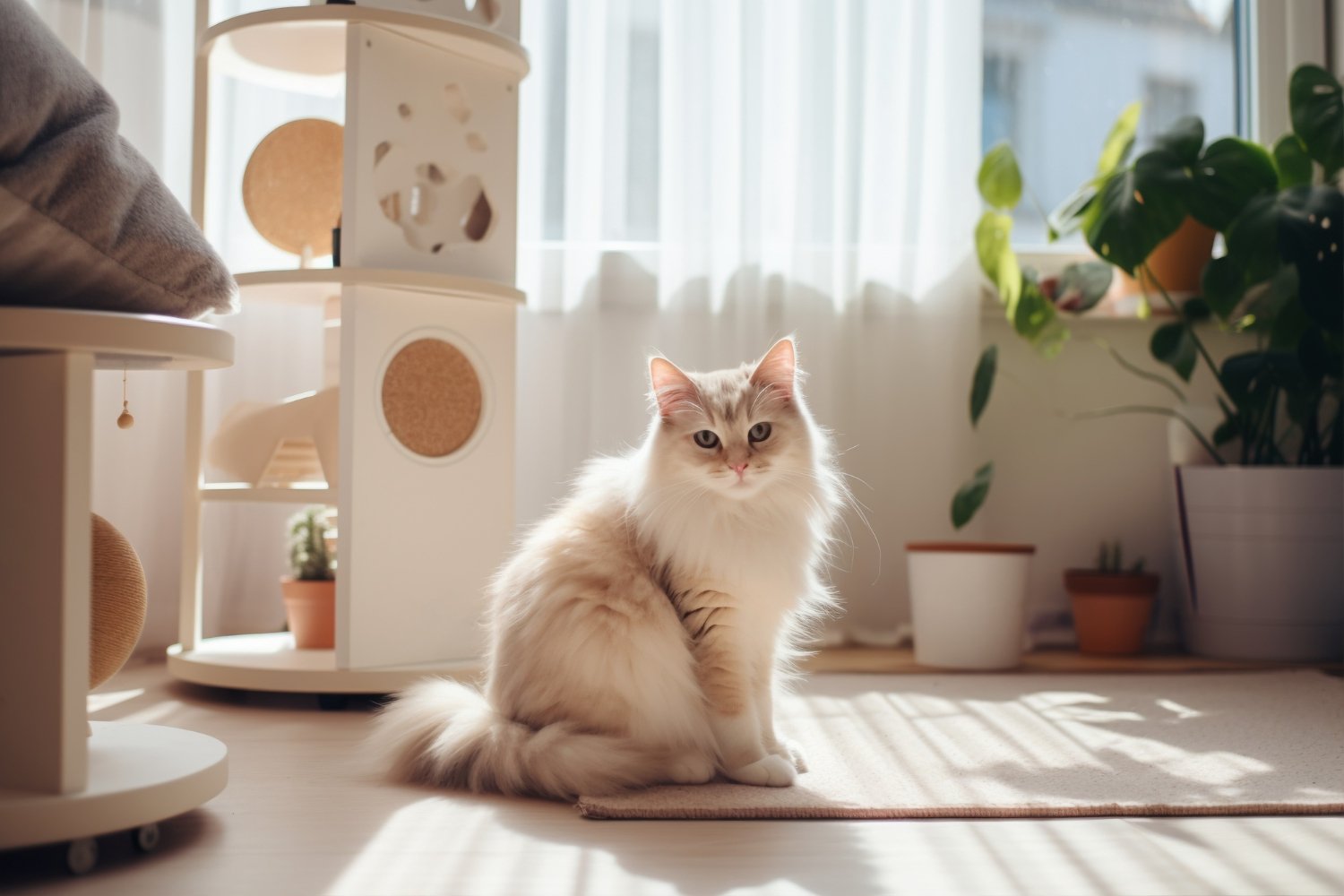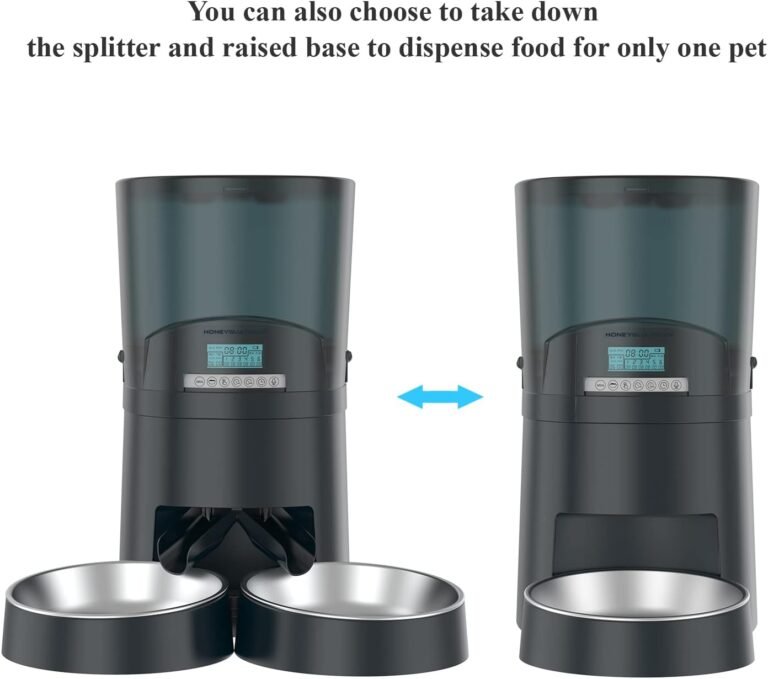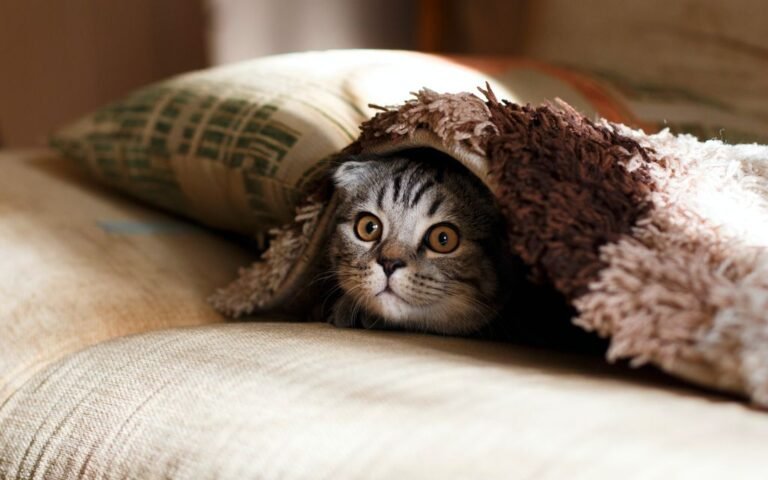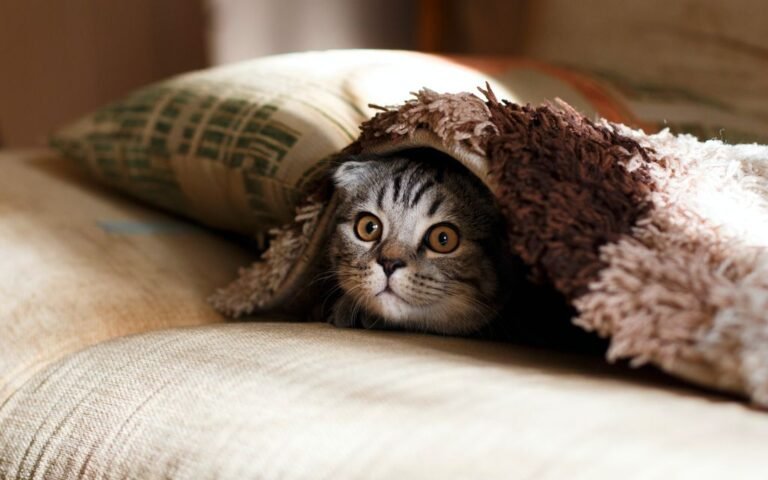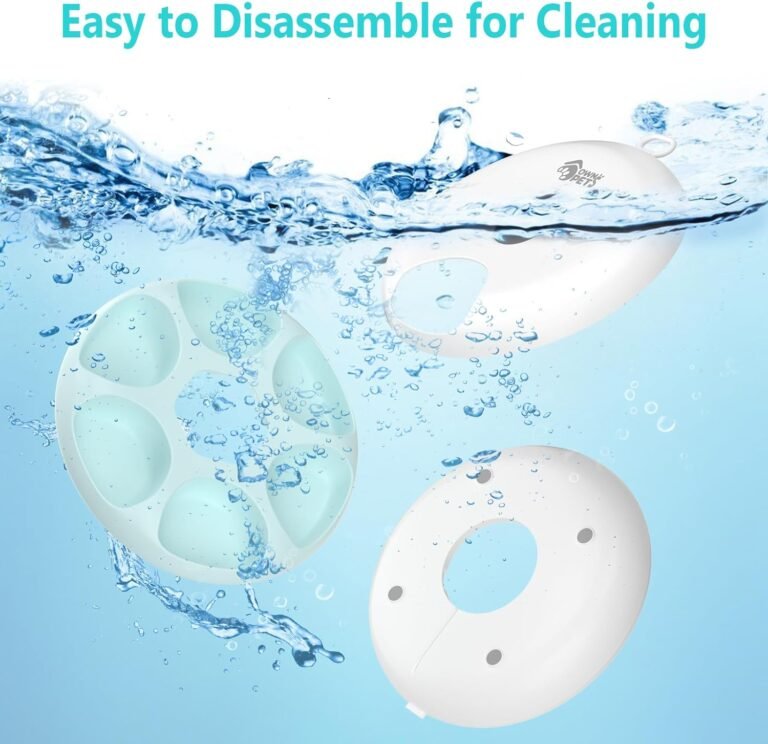Designing a Stress-Free Pet Environment at Home
Designing a stress-free pet environment at home is crucial for the well-being and happiness of our furry friends. By creating a calm and safe space, promoting mental stimulation and enrichment, maintaining a clean and hygienic environment, and ensuring a balanced diet and proper nutrition, we can provide the optimal conditions for our pets to thrive. Here are the key takeaways:
Key Takeaways
- Choose the right location for your pet’s space
- Design a comfortable sleeping area for your pet
- Provide ample play and exercise opportunities
- Minimize noise and distractions
- Introduce interactive toys and puzzles
Creating a Calm and Safe Space for Your Pet
Choosing the Right Location
When designing a pet-friendly home, choosing the right location is essential. You want to create a space that is safe and comfortable for your pet. Consider a location that is away from busy streets or noisy areas, as this can cause stress and anxiety for your pet. CBD for cats can also be helpful in reducing anxiety and promoting relaxation. Additionally, ensure that the location has ample natural light and comfortable resting areas to create a peaceful and relaxing atmosphere. By selecting the right location, you can provide a calm and stress-free environment for your furry friend.
Designing a Comfortable Sleeping Area
Making your pet’s sleeping area as comfortable as possible is essential for ensuring they get a good night’s rest. Add a cozy pet bed and soft blankets to create a comfortable and inviting space for them to sleep. Consider the size and breed of your pet when choosing a bed to ensure it provides adequate support. If your pet has specific needs, such as joint or muscle issues, you may want to consider an orthopedic bed that offers extra cushioning and support. Provide a quiet and peaceful environment by minimizing noise and distractions in the sleeping area. This can be achieved by placing the bed in a quiet corner of the house away from high-traffic areas and loud appliances. Use blackout curtains or blinds to block out any external light that may disturb your pet’s sleep. Additionally, maintain a consistent sleep routine by establishing regular bedtimes and waking times for your pet. This can help regulate their internal clock and promote better sleep quality.
Providing Ample Play and Exercise Opportunities
Regular exercise is crucial for the physical and mental well-being of your pet. Engaging in play and exercise can boost mood, reduce stress, and enhance overall well-being. It is important to provide ample opportunities for your pet to stay active and stimulated. Whether it’s going for daily walks, playing fetch, or engaging in interactive games, these activities help keep your pet healthy and happy. Pets needs regular exercise to maintain a balanced lifestyle. Here are some tips to ensure your pet gets the exercise they need:
- Set aside dedicated playtime each day.
- Provide a variety of toys and activities to keep them engaged.
- Consider incorporating puzzle toys to mentally stimulate your pet.
- Explore different environments for exercise, such as parks or hiking trails.
Minimizing Noise and Distractions
To create a calm and stress-free environment for your pet, it’s important to minimize noise and distractions in their living space. Sound-sensitive dogs may benefit from the use of a white noise machine to block out noise pollution and outdoor sounds. Additionally, consider using privacy film on windows to prevent triggers from outside while still maintaining a warm and bright room. Decorating the space with doggy-themed items and framed pictures of you and your pup can create a cozy and comforting atmosphere. When it comes to plants, opt for non-toxic and pet-friendly options like spider plants.
Promoting Mental Stimulation and Enrichment

Introducing Interactive Toys and Puzzles
Interactive toys and puzzles are a great way to keep your dog mentally stimulated and entertained. They provide a fun and engaging challenge for your pet, helping to prevent boredom and reduce anxiety. These toys are designed to stimulate your dog’s natural instincts and promote problem-solving skills. They are also a great way to bond with your pet and provide them with the mental stimulation they need. So why not give your dog the gift of enrichment with interactive toys and puzzles?
Implementing Training and Enrichment Activities
Implementing training and enrichment activities is crucial for the well-being of your pet. These activities not only provide mental stimulation but also help prevent boredom and improve behavior. By engaging your pet in training sessions and enrichment games, you can keep them physically and mentally active. Here are some ways you can incorporate training and enrichment into your pet’s daily routine:
- Interactive Toys and Puzzles: Introduce your pet to interactive toys and puzzles that challenge their problem-solving skills. These toys can keep them entertained and mentally engaged.
- Training Sessions: Enroll your pet in a training class that goes beyond the basics. Training sessions not only teach them new commands but also provide mental stimulation.
- Outdoor Enrichment: Create a pet-friendly outdoor space where your pet can explore and engage with their surroundings. This can include providing them with sensory experiences like different textures and smells.
- Scent and Sound Therapy: Use scents and sounds to create a calming environment for your pet. Certain scents, like lavender, can help reduce anxiety, while calming music can help create a soothing atmosphere.
Remember, implementing training and enrichment activities is a fun and effective way to keep your pet happy and mentally stimulated. It’s important to tailor these activities to your pet’s individual needs and preferences. So, get creative and discover what activities your pet enjoys the most!
Creating a Pet-Friendly Garden or Outdoor Space
Designing a pet-friendly garden or outdoor space is an essential part of creating a stress-free environment for your pet. Providing a safe and secure outdoor area where your pet can roam freely is crucial for their physical and mental well-being. Ensuring proper fencing and gates will prevent your pet from wandering off and getting into potentially dangerous situations. Incorporating pet-friendly features such as secure windows and doors can also help prevent accidents and injuries.
To promote skin health for pets, it’s important to choose pet-friendly plants and avoid any toxic ones. Research which plants are safe for your pet and consider creating a designated area for them to explore. Regularly check the garden for any potential hazards, such as sharp objects or toxic substances, and remove them promptly.
Here are some additional tips for creating a pet-friendly garden:
- Provide shade and shelter to protect your pet from extreme weather conditions.
- Create a designated potty area to make it easier for your pet to relieve themselves.
- Include interactive elements such as toys or agility equipment to keep your pet mentally stimulated.
Remember, a well-designed pet-friendly garden or outdoor space can provide your pet with a safe and enjoyable environment to explore and relax in.
Using Scent and Sound Therapy
Create a scent garden for your pet to provide amazing scent enrichment. Dilute dog-safe scents like lavender, rosemary, or spearmint and spritz them onto outdoor features like rocks or tree stumps. Allow your pet to explore the new scents and follow their nose. Another option is to use dried herbs and rub them directly onto surfaces to transfer the scent. Let the scent dissipate over a few days and then introduce a different smell. Additionally, consider using sound therapy to create a calming environment for your pet. Play soothing music or use white noise machines to block out stress-causing noises. You can also use remote speakers in the backyard to avoid pumping loud music inside the house. Remember that your pet’s sense of smell and hearing are more sensitive than yours, so make decisions that prioritize their comfort and well-being.
Maintaining a Clean and Hygienic Environment

Establishing a Regular Cleaning Routine
Remember that once your beautiful bunny area is set up just the way you envisioned it, it’s also important to keep it clean! Good hygiene doesn’t just keep your home looking and smelling more pleasant, it’s also essential for the health and happiness of your bunnies. A poorly maintained cage can lead to all sorts of nasty rabbit illnesses like urinary tract infections, as well as sadness, stress and general discomfort. So make sure you stick to a daily and weekly cleaning schedule. Spot-clean any spills and messes daily with a top-up of fresh food and water, and thoroughly clean their cage every 1-2 weeks. Our easy-access interior, wipeable coroplast base and endlessly reusable fleece liners mean that you never have to dread this task ever again! The Role of Cage Design The best way to pick the right cage for your rabbits is by carrying out your research and understanding your bunny’s basic needs. Rabbits require a secure and enriching environment that gives them plenty of space to hop about with their furry friends. It’s also helpful to opt for a cage with easy access and materials that are easy to clean, like a wipeable coroplast base and reusable fleece liners. By maintaining a clean and hygienic environment, you are ensuring the well-being and happiness of your furry friend.
Choosing Pet-Safe Cleaning Products
When pet-proofing your home, it’s important to ensure that all cleaning products are pet-safe. This means using products that are specifically formulated to be safe for pets and free from harmful chemicals. By using pet-safe cleaning products, you can protect your pet’s health and prevent any accidental ingestion of toxic substances. Look for cleaning products that are labeled as pet-friendly or non-toxic. It’s also a good idea to store all cleaning products securely in a cupboard that your pet cannot access. This will help to minimize any potential risks. Remember, the safety and well-being of your pet should always be a top priority.
Managing Pet Odors
To keep your home smelling fresh and clean, it’s important to effectively manage pet odors. Here are some tips to help you maintain a pleasant environment:
- Regularly clean your pet’s bedding and toys to remove any lingering odors.
- Use pet-safe cleaning products that are specifically designed to eliminate pet odors.
- Vacuum and sweep your floors regularly to remove pet hair and dander.
- Open windows and use air purifiers to improve air circulation and reduce odors.
- Consider using odor-absorbing products, such as baking soda or activated charcoal, in areas where odors are a concern.
By following these simple steps, you can ensure that your home remains fresh and odor-free, creating a more comfortable space for both you and your pet.
Preventing Fleas and Ticks
When it comes to preventing fleas and ticks, there are several important steps you can take to protect your pet. First, make sure your pet is on a regular flea and tick prevention medication recommended by your veterinarian. These medications are designed to kill and repel fleas and ticks, preventing infestations and the transmission of diseases. Additionally, regularly check your pet for any signs of fleas or ticks, such as excessive scratching or small black dots on their fur. If you notice any of these signs, consult your veterinarian for appropriate treatment options. Finally, keep your pet’s environment clean and free of fleas and ticks by regularly vacuuming and washing their bedding. By following these preventive measures, you can ensure your pet’s well-being and protect them from the discomfort and health risks associated with fleas and ticks.
Ensuring a Balanced Diet and Proper Nutrition

Consulting with a Veterinarian for Dietary Recommendations
Consulting with a veterinarian for dietary recommendations is essential. Veterinarians may recommend various options, including behavioral therapies or medications that can help alleviate your pet’s stress. The AVMA suggests discussing with your veterinarian potential treatment options like anti-anxiety medications or calming supplements. However, it is crucial never to administer any medication to your pet without consulting a professional. If you are worried that your pet is having an emergency or if you have specific medical questions related to your pet’s current or chronic medical conditions, please contact or visit your veterinarian, an animal-specific poison control hotline, or your local emergency veterinary care center. Please do not ask emergency or other specific medical questions about your pets in the blog comments. As an online informational resource, Preventive Vet is unable to and does not provide specific medical advice or counseling. A thorough physical exam, patient history, and an established veterinary-patient-client relationship is required to provide specific medical advice.
Selecting High-Quality Pet Food
When it comes to selecting high-quality pet food, there are a few key factors to consider. First and foremost, you want to ensure that the food you choose meets all of your pet’s nutritional needs. Look for a brand that uses premium ingredients and follows strict quality control standards. It’s also important to consider your pet’s specific dietary requirements. If your pet has any food allergies or sensitivities, look for a brand that offers limited ingredient or hypoallergenic options. Additionally, it’s a good idea to consult with your veterinarian for dietary recommendations tailored to your pet’s individual needs. Remember, a balanced diet is essential for your pet’s overall health and well-being.
Implementing a Feeding Schedule
When it comes to feeding your pet, implementing a feeding schedule is key. Establishing a consistent routine helps regulate their digestion and prevents overeating. It also allows you to monitor their appetite and ensure they are getting the right amount of food. A feeding schedule can be especially beneficial for pets with specific dietary needs or weight management goals.
To create a feeding schedule, start by consulting with your veterinarian for dietary recommendations based on your pet’s age, breed, and health condition. They can provide guidance on the appropriate portion sizes and feeding frequency.
Once you have the recommended guidelines, select a high-quality pet food that meets your pet’s nutritional requirements. Look for brands that use natural ingredients and avoid fillers or artificial additives. It’s important to read the labels and understand what ingredients are included in the food.
Next, determine the feeding times that work best for your schedule and your pet’s needs. Divide the daily portion into two or three meals, depending on your pet’s age and activity level. Avoid leaving food out all day, as it can lead to overeating or attract pests.
Finally, stick to the schedule and avoid giving in to begging or feeding outside of the designated meal times. Consistency is key to maintaining a healthy feeding routine. If you have multiple pets, it’s important to separate them during meal times to prevent food aggression or competition.
Remember, a balanced diet and proper nutrition are essential for your pet’s overall health and well-being. By implementing a feeding schedule, you can ensure they are getting the nutrients they need in a controlled and structured manner.
Avoiding Harmful Foods and Overfeeding
When it comes to your pet’s diet, it’s important to be mindful of what they consume. Avoid feeding your pet harmful foods such as chocolate and raisins, as these can be toxic to them. Additionally, overfeeding can lead to weight gain and other health issues. Maintaining a balanced diet is key to keeping your pet healthy and happy. Consult with a veterinarian to determine the appropriate portion sizes and nutritional needs for your pet. Implement a feeding schedule to ensure they are getting the right amount of food at the right times. Remember, a healthy diet is essential for your pet’s overall well-being.
Ensuring a balanced diet and proper nutrition is essential for the overall health and well-being of our beloved pets. At Whisker Wellbeing, we understand the importance of providing holistic and natural care for cats and dogs. Our mission is to enhance the physical and emotional quality of life for your furry friends. We offer a wide range of products, including CBD, hemp, and other natural options, all carefully selected to support their well-being. Whether you’re looking for supplements, treats, or grooming products, we have everything you need to keep your pets happy and healthy. Visit our website today to explore our collection and give your pets the care they deserve.
Conclusion on Stress-Free Pet Environment
In conclusion, designing a stress-free pet environment at home requires careful consideration and intentional design. By incorporating pet-friendly features such as secure windows and doors, ample space for exercise and play, and soundproofing materials, you can create a calming and peaceful atmosphere for your pets. Additionally, establishing clear boundaries, practicing self-care, and fostering positive connections within your family can contribute to a harmonious and nurturing environment. Remember, creating a stress-free home is a journey that requires patience and effort, but the rewards of a happy and healthy pet are well worth it.
Frequently Asked Questions
How can I create a calm and safe space for my pet at home?
You can create a calm and safe space for your pet at home by choosing the right location, designing a comfortable sleeping area, providing ample play and exercise opportunities, and minimizing noise and distractions.
What are some ways to promote mental stimulation and enrichment for my pet?
You can promote mental stimulation and enrichment for your pet by introducing interactive toys and puzzles, implementing training and enrichment activities, creating a pet-friendly garden or outdoor space, and using scent and sound therapy.
How can I maintain a clean and hygienic environment for my pet?
You can maintain a clean and hygienic environment for your pet by establishing a regular cleaning routine, choosing pet-safe cleaning products, managing pet odors, and preventing fleas and ticks.
What should I consider when ensuring a balanced diet and proper nutrition for my pet?
When ensuring a balanced diet and proper nutrition for your pet, you should consult with a veterinarian for dietary recommendations, select high-quality pet food, implement a feeding schedule, and avoid harmful foods and overfeeding.
How can I create a pet-friendly garden or outdoor space?
You can create a pet-friendly garden or outdoor space by providing secure fencing, selecting non-toxic plants, creating shaded areas, and providing water and shelter for your pet.
What are some pet-safe cleaning products that I can use?
Some pet-safe cleaning products that you can use include vinegar and water solution for cleaning floors, baking soda for deodorizing, and hydrogen peroxide for stain removal.

